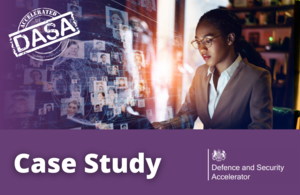Confidence in a crisis - Conducttr Crisis Training Software
Conducttr's virtual training environment helps defence personnel prepare for crises and contested information spaces

Modern technology, the internet, and social media have been a catalyst for major change in defence and security. As well as fighting on the ground, armies and governments must also win the battle for hearts and minds. This becomes increasingly difficult when adversaries employ more complex tactics to spread misinformation. News, especially fake news, travels fast, so it is imperative that war fighters are prepared for battle in the digital world.
Conducttr began in the entertainment industry, creating augmented and immersive reality for TV and film fans. Following two rounds of DASA funding, the business now focuses solely on providing immersive “life-like” training for influence and information warfare. Their technology provides a comprehensive real-time simulated information environment for social media and news and models target audience reactions.
The additional funding has already led to considerable impact for the business. Since their first round of DASA funding, Conducttr has doubled their staff headcount and expanded their portfolio, gaining the attention of big-name clients, including Vodafone, UEFA and the United Nations. In 2021 they received the Queen’s Award for Innovation.
Robert Pratten, CEO of Conducttr said:
Many of our customers are not aware of the possibilities of the technology before we meet them. DASA gave us the opportunity to work alongside potential end-users so we were able to gain a first-hand understanding of their requirements. This gave us invaluable insights to create something truly leading edge and world-beating.
Working with DASA enabled Conducttr to test its technology in a defence setting by running training activities with Ministry of Defence personnel.
These opportunities have enabled Conducttr to further develop their product for defence and security use whilst also highlighting its potential to strengthen government response to crises such as cyber attacks, pandemics, flooding, earthquakes, terrorist threats, and other major incidents.